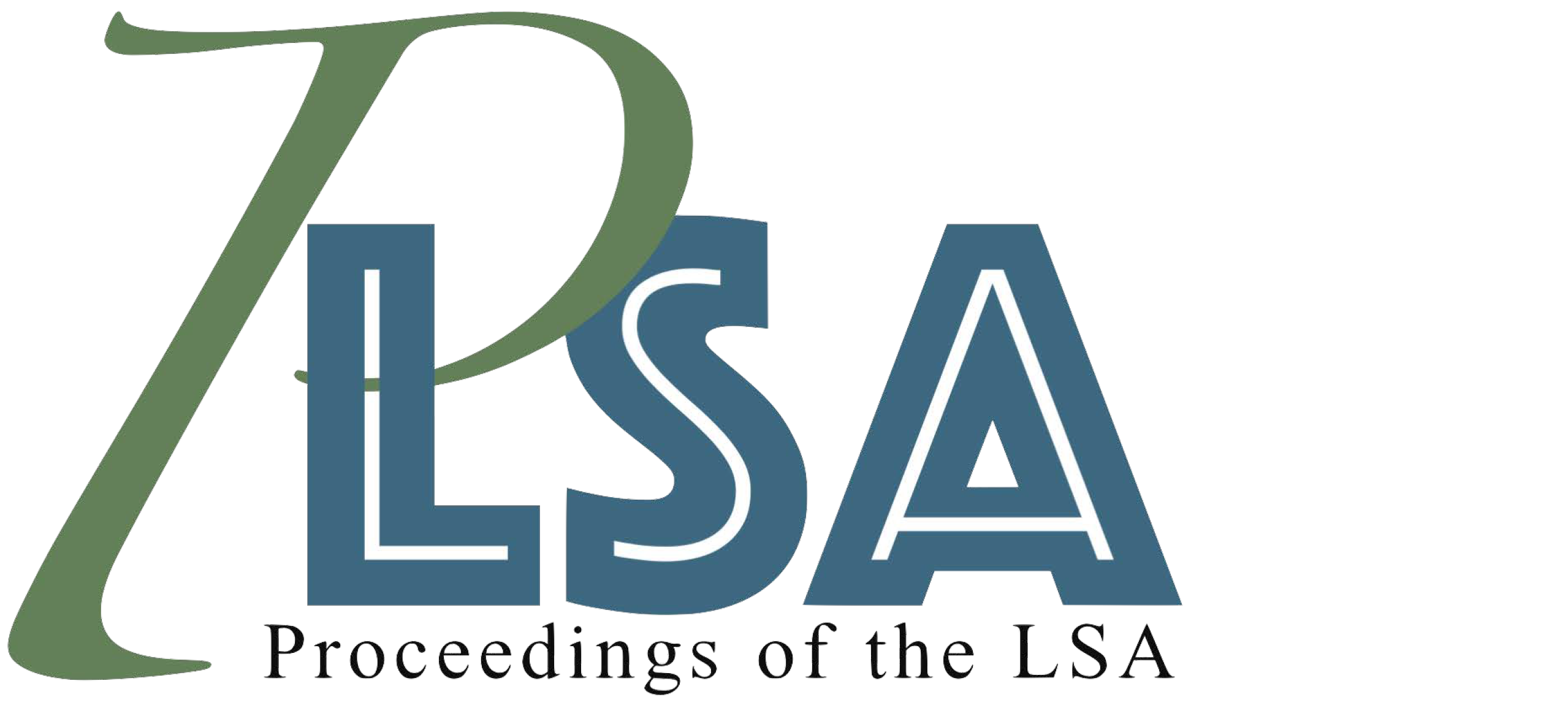Bisexuality and /s/ production
DOI:
https://doi.org/10.3765/plsa.v6i1.4942Keywords:
bisexuality, fricatives, language, gender, and sexuality, sociophoneticsAbstract
The belief that there are systematic differences in speech production as a function of sexual orientation has inspired a vast body of linguistic research investigating the acoustic correlates of sounding queer. Although gay-sounding voices and to a lesser extent lesbian-sounding voices are well represented in this literature, bisexuality is conspicuously absent. The current study addresses this gap through an acoustic analysis of bisexual English speakers’ read speech vis-à-vis lesbian, gay, and straight speakers, specifically attending to three measures of the voiceless alveolar fricative /s/: center of gravity, skew, and duration. A qualitative analysis of post-test participant information surveys contextualizes the statistical results. The study finds that bisexual women and men do not pattern consistently with lesbian, gay, or straight speakers, or even with each other. The results call into question the common methodological practice of grouping bisexual speakers with lesbian and gay speakers a priori and underscore the importance of intersectionality, gender normativity, and ideology in sociophonetic studies of sexuality and the voice.Downloads
Published
2021-03-20
Issue
Section
Articles
License
Published by the LSA with permission of the author(s) under a CC BY 4.0 license.
How to Cite
Willis, Chloe. 2021. “Bisexuality and S Production”. Proceedings of the Linguistic Society of America 6 (1): 69–81. https://doi.org/10.3765/plsa.v6i1.4942.
